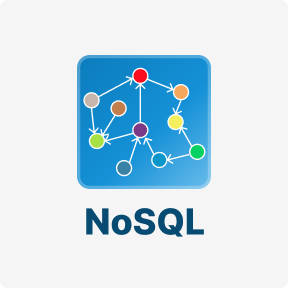Often, these are services for process automation, marketing, collaboration, and data organization. Infrastructure as a Service is basically hardware devices, such as network devices, visualized servers, storage, etc. It introduces enterprises to a virtualization environment where services facilitate cloud platforms and applications to connect and function. IaaS addresses compute services, in the form of a set of virtual machines with combined storage, processing capability, as well as other related services and network connectivity. This empowers multiple applications, maintained by different cloud consumers, to mutually share common physical resources, such as servers and storage. The other benefit of cloud computing services is redundancy, meaning the data is backed up in several data centers simultaneously.
This is mainly because they offer engaging opportunities for the acquisition and management of cloud computing resources and software platforms. They offer compute, storage, and network resources over the internet, enabling companies to access shared on-demand resources based on their unique requirements and business goals. The cloud provider handles all facets of the application environment in this cloud service model, such as virtual machines, networking services, storage of data, and applications. The cloud tenant only needs to provide the application managed by the cloud provider with their data.
Software as a Service (SaaS)
On the basis of the former conducted business and security analysis the implementation and Migration Security Concept has to be developed. The migration starts with a realistic test scenario, which is executed by employees of the cloud customer with real applications, but mostly as a simulation and not in real service. During this subphase, the decision to keep staying in the former situation or to migrate has to be made and necessary changes in the concept of service provisioning by the CSP can be done.

Software as a service delivers a full application stack as a service, from underlying infrastructure to maintenance and updates to the app software itself. A SaaS solution is often an end-user application, where both the service and the infrastructure is managed and maintained by the cloud service provider. Cloud computing addresses these issues by offering computing resources as scalable, on-demand services.
Data storage
The potential value of cloud computing to your organization will only be realized if it addresses your business needs, aims and objectives. The decision to take the first steps on a cloud journey should be driven not by a desire to invest in the latest technological innovation, but rather by a desire to solve business problems. Now that we have understood the benefits of cloud computing, let’s understand the Cloud Computing Service Models. The demand for cloud-based services is increasing at an extraordinary pace. If we’re going to meet such demand, the construction segment should consider adopting new tools and techniques to rise to the occasion. The PaaS organization stores your data, so it sometimes poses a security risk to your app’s users.

Let’s shift our attention to the next cloud deployment model on the list, private cloud. Unlike the public cloud, it provides a dedicated environment and services to a single company. A private cloud can either be hosted https://www.globalcloudteam.com/ on-premises or at a data center owned and managed by a third party on behalf of the customer. As you might imagine, on-premise vs. third-party data centers have very different operational costs and responsibility models.
What are the Different Service Models of Cloud Computing?
You can complement your SaaS solution with integrations and security options to make it more user-oriented. You depend on the SaaS company’s security measures, so your data may be compromised if any leaks occur. SaaS tools may become incompatible with other tools and hardware already used in your business. Hybrid clouds are the catch-all, because any workload can be hosted anywhere. Cloud Storage Globally unified, scalable, and highly durable object storage for developers and enterprises. Many organizations, including those in retail, have wildly varying needs for compute capacity.
- There are many things to take into consideration when selecting a cloud deployment model that is right for your company.
- The model of shared responsibility applies; the customer manages and maintains the services they have delivered, and the cloud provider manages the cloud infrastructure and maintains it.
- Cloud computing offers almost unlimited resources to process large volumes of data to speed research and reduce time to insights.
- With solutions and services for IT, DevOps, and developers; AWS has a broad platform to help you accomplish your next project.
- IaaS, PaaS and SaaS are the three most popular types of cloud service offerings.
Humans feed software key inputs and computers then «dream up» new, innovative approaches to create these structures—approaches that humans very well may not have conceived on their own. To keep pace with the burgeoning demand for cloud computing infrastructure, companies are evolving their construction practices and strategies with a focus on innovation. Speed and scalability are paramount to the success and profitability of data center construction. And, as global net-zero goals and initiatives gain support, energy efficiency and sustainability have also become key considerations in the design and development of digital infrastructure. While selecting the cloud service model, look for a well-financed cloud provider with steady profits from the infrastructure. The SaaS model can be best compared to renting a fully serviced apartment where renters have to do little to run or maintain their surroundings, and focus instead on living and enjoying their apartment.
Private Cloud
The company acquires several remote data centers all over the world, connects them to devices, and is fully responsible for data encryption and server maintenance. There are several different types of cloud services offered as a service. These are sometimes called the cloud computing stack, as they progressively build on top of each other. Virtualization creates an efficiency that multiplies the capability of the hardware. Through virtualization, one data center can run as much computational power as many data centers did in prior decades.
The last of our four most popular cloud deployment models is the multi-cloud deployment model. A multi-cloud deployment model refers to one that leverages cloud computing services (storage, computing, applications, etc.) from more than a single cloud provider. Public cloud is more or less which of the following enterprise wireless deployment a platform that leverages a standard cloud computing model to make storage, networking, virtual machines, etc. available to the public over the public internet. These are typically grouped as services and made available either for free or charged via subscription models or based on usage.
The three service models of Cloud Computing
The customer chooses the operating system, software, application, and data. Builds on virtualization technology, so resources can easily be scaled up or down as per the organization’s need. With serverless computing you don’t need to worry about launching, managing, or scaling any compute resources such as server “instances”, clusters, or load balancers. We will analyze your business needs, determine the areas that could be improved by introducing сloud computing, help to choose a provider that fits your needs, and integrate the solution. The most powerful example of such cloud solutions is — a robust CRM used to track sales and customer engagement in websites and mobile apps that can even be connected directly to the site.

Now, let’s define each cloud service model and learn the benefits they provide to organization. But in some cases, any of the three ‘as-a-service’ models will offer a viable solution. In these cases, organizations typically compare the alternatives based on the management ease they offer, vs. the control they give up.
Criteria for choosing the best cloud service provider
He also mentioned the possibility of using off-prem accelerators to process on-prem data – an arrangement he said could mean slower processing but would remove the need to move data and therefore bring some benefits. You’ll gain access to our entire library of on-demand training courses — current and future — for the next 12 months. SaaS, Paas, IaaS are not mutually exclusive; most organizations use more than one, and many larger organizations today use all three, often in combination with traditional IT. Examples of PaaS solutions include AWS Elastic Beanstalk, Google App Engine, Microsoft Windows Azure, and Red Hat OpenShift on IBM Cloud. Many mid-sized businesses use more than one, and most large enterprises use all three.
0 комментариев